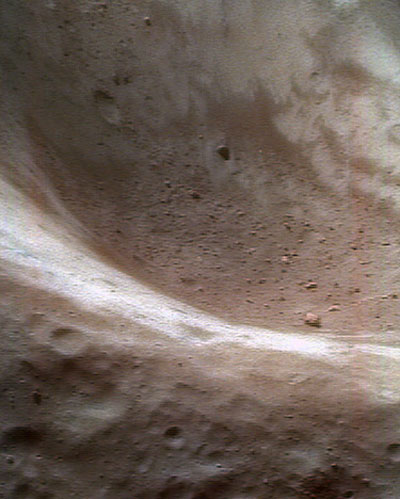Explanation: From fifty kilometers above asteroid Eros, the surface inside one of its largest craters appears covered with an unusual substance: regolith. The thickness and composition of the surface dust that is regolith remains a topic of much research. Much of the regolith on 433 Eros was probably created by numerous small impacts during its long history. In this representative-color view taken by the robot spacecraft NEAR-SHOEMAKER currently orbiting Eros, brown areas indicate regolith that has been chemically altered by exposure to the solar wind during micrometeorite impacts. White areas are thought to have undergone relatively less exposure. The boulders visible inside the crater appear brown, indicating either that they are old enough to have a surface itself tanned by the solar wind, or that they have somehow become covered with some dark surface regolith.
1999 2000 2001 2002 2003 2004 2005 2006 2007 2008 2009 2010 2011 2012 2013 2014 2015 2016 2017 2018 2019 2020 2021 2022 2023 2024 2025 |
Yanvar' Fevral' Mart Aprel' Mai Iyun' Iyul' Avgust Sentyabr' Oktyabr' Noyabr' Dekabr' |
NASA Web Site Statements, Warnings, and Disclaimers
NASA Official: Jay Norris. Specific rights apply.
A service of: LHEA at NASA / GSFC
& Michigan Tech. U.
|
Publikacii s klyuchevymi slovami:
433 Eros - regolith - asteroid
Publikacii so slovami: 433 Eros - regolith - asteroid | |
Sm. takzhe:
Vse publikacii na tu zhe temu >> | |
